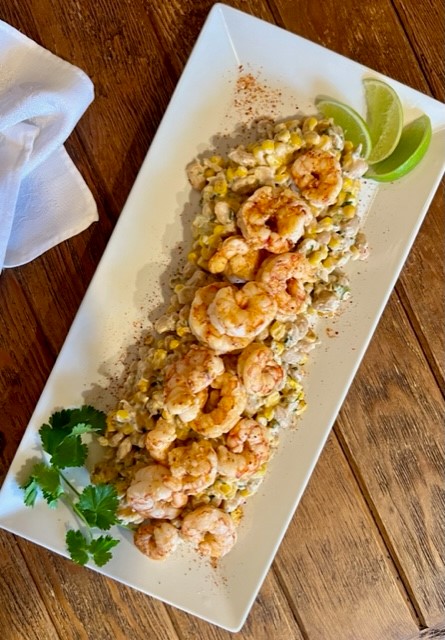
Esquites-Style Shrimp with White Beans
Esquites-Style Shrimp with White Beans has been on repeat in my kitchen for months. It’s perfect party fare yet substantial enough for a meal. Don’t worry about leftovers – there won’t be any.
Corn (maize, or maíz in Spanish), the star of Esquites, is being honored in a month-long celebration, Pueblos del Maíz, in Tucson, Arizona and three other cities, Mérida, Mexico, Puebla, Mexico and San Antonio, Texas (1). These cities are part of the United Nations Educational, Scientific and Cultural Organization (UNESCO) Creative Cities Network in the field of Gastronomy (1,2).
Why a celebration of corn? The Pueblos del Maíz website explains:
“As evidenced by its continued cultivation across the globe, the cultural and culinary impacts of maíz have spread across physical and cultural boundaries. Maíz’s nutritional, economic, and cultural values have proven it to be one of the most important crops for human civilization. Cultivated for at least nine thousand years as a food crop, animal feed, and now as an important material and fuel source, maíz is woven into the very fabric of modern society.”
My respect for corn skyrocketed after attending a couple of Pueblos del Maíz events in Tucson, the first of only two American cities honored as a City of Gastronomy by UNESCO. Tucson has the longest agricultural history of any locale in the United States, going back some 4,000 years, and corn, which originated in Mesoamerica (Mexico and Central America today), was grown in the Tucson area as early as 2,100 BC (4).
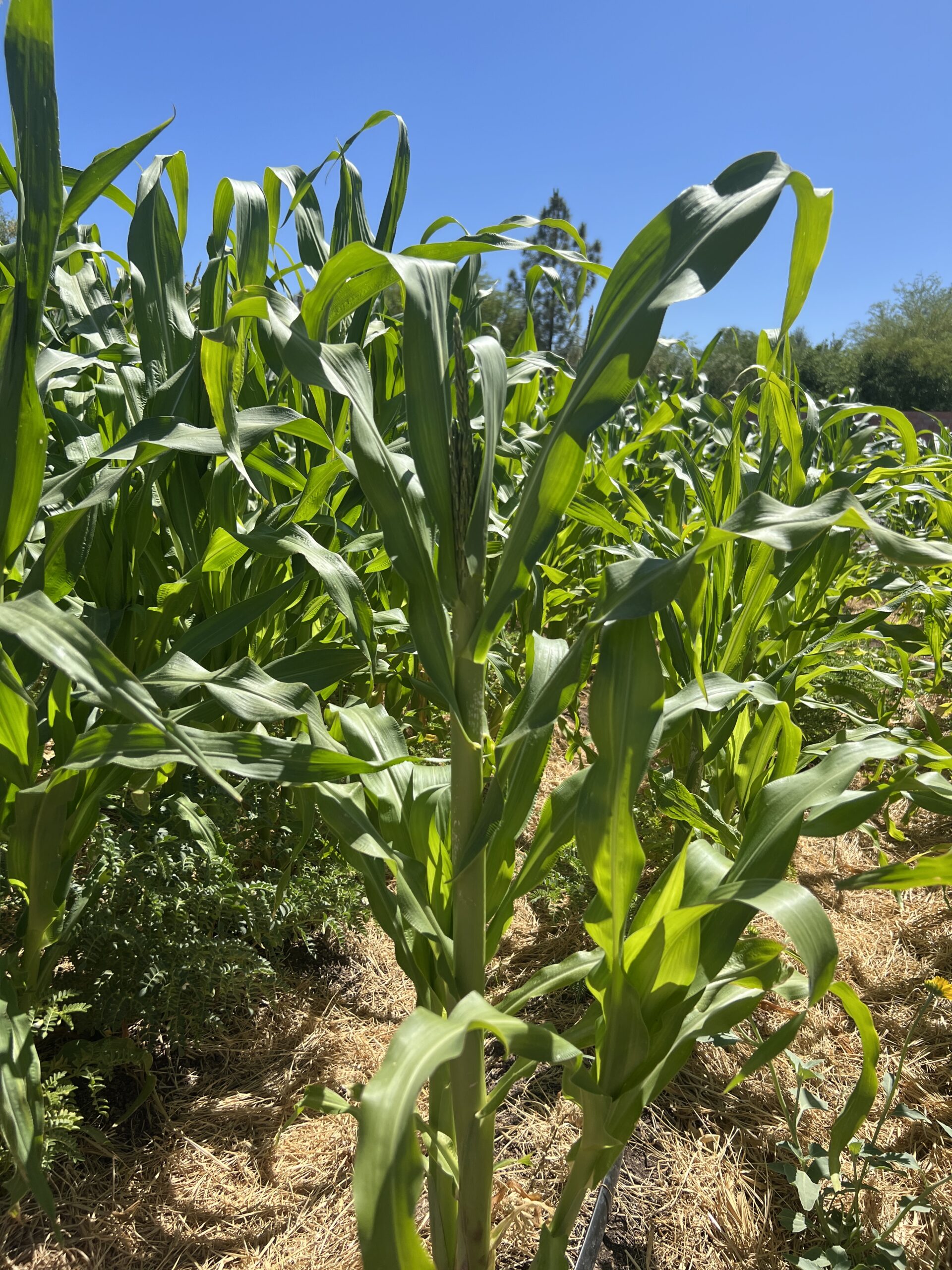
I attended a corn-focused tour of Native Seeds/SEARCH (5), a nonprofit that conserves and regenerates seeds and makes them available for free to people and communities culturally and historically connected to the seeds. They also sell seeds to gardeners and farmers via an online store. The Native Seeds/SEARCH bank stores over 1,800 varieties of desert-adapted seeds of the southwestern U.S. and northwestern Mexico, including 500 different accessions of corn/maize. In the photo you can see some of these varieties and seeds of teosinte, or “grain of the gods” the grassy ancestor of corn that we know today.
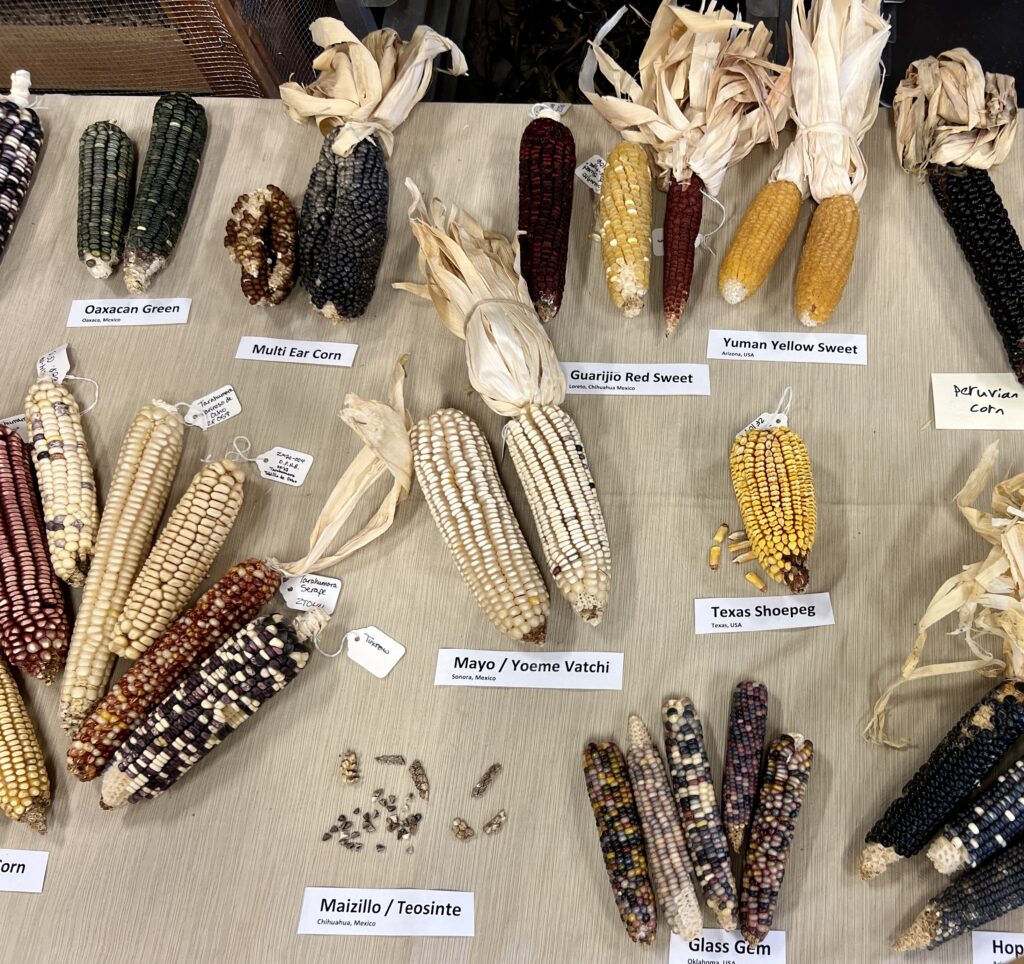
Dedicated staff and many volunteer hours go into growing and isolating different types of corn to produce seeds, then drying and preparing them for storage in a cold room. My eyes were opened to an awesome variety of traditional southwest corn and their unique culinary, craft and ceremonial purposes.
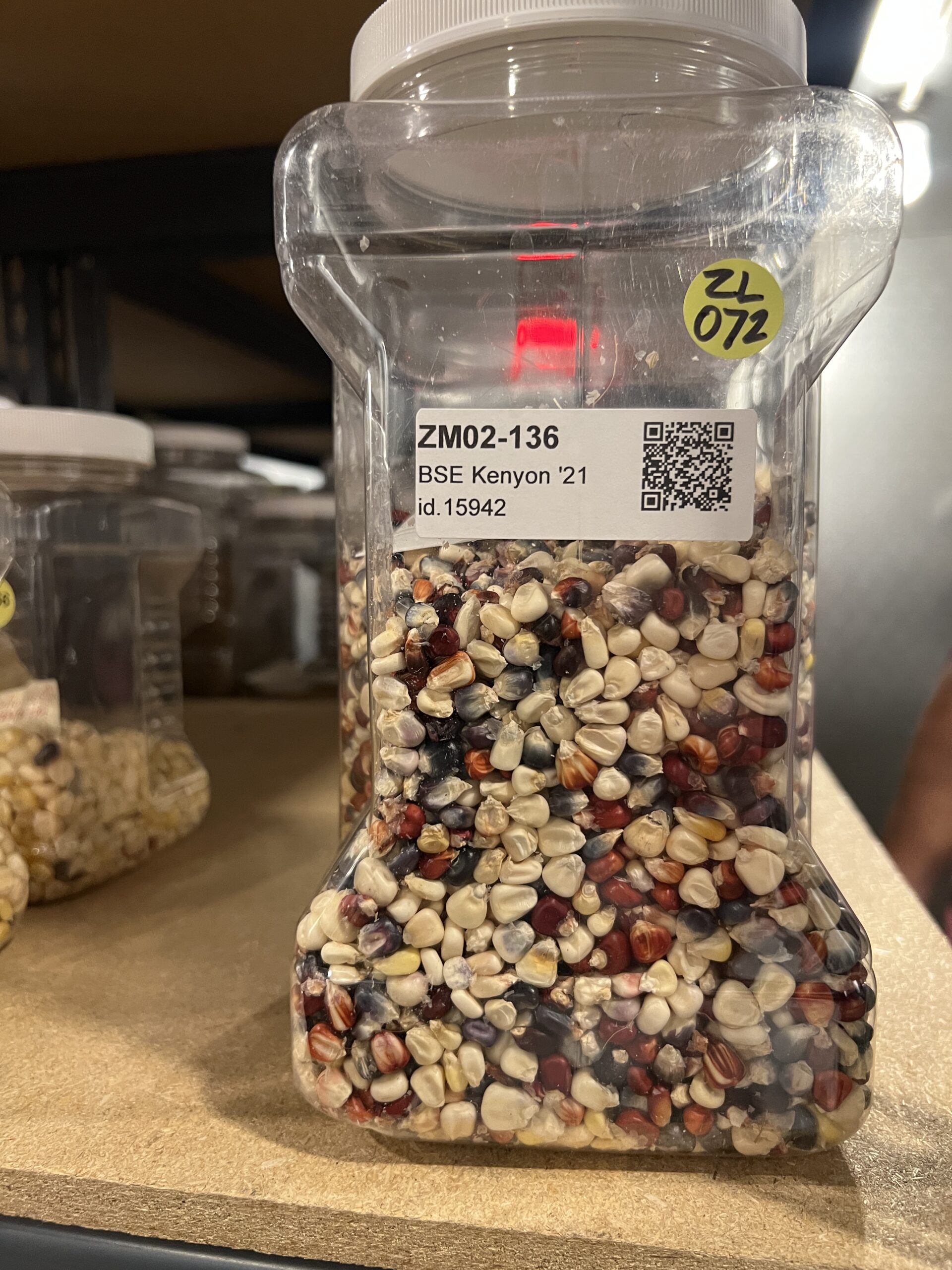
Another Pueblos del Maíz celebration featured music and dance performances, muralists, cooking demos and food, mostly made with corn. One was another Mexican street food snack, Elote, kind of an on-the-cob version of Esquites, topped with mayonnaise, cotija, a drizzle of spicy chili sauce and lime.
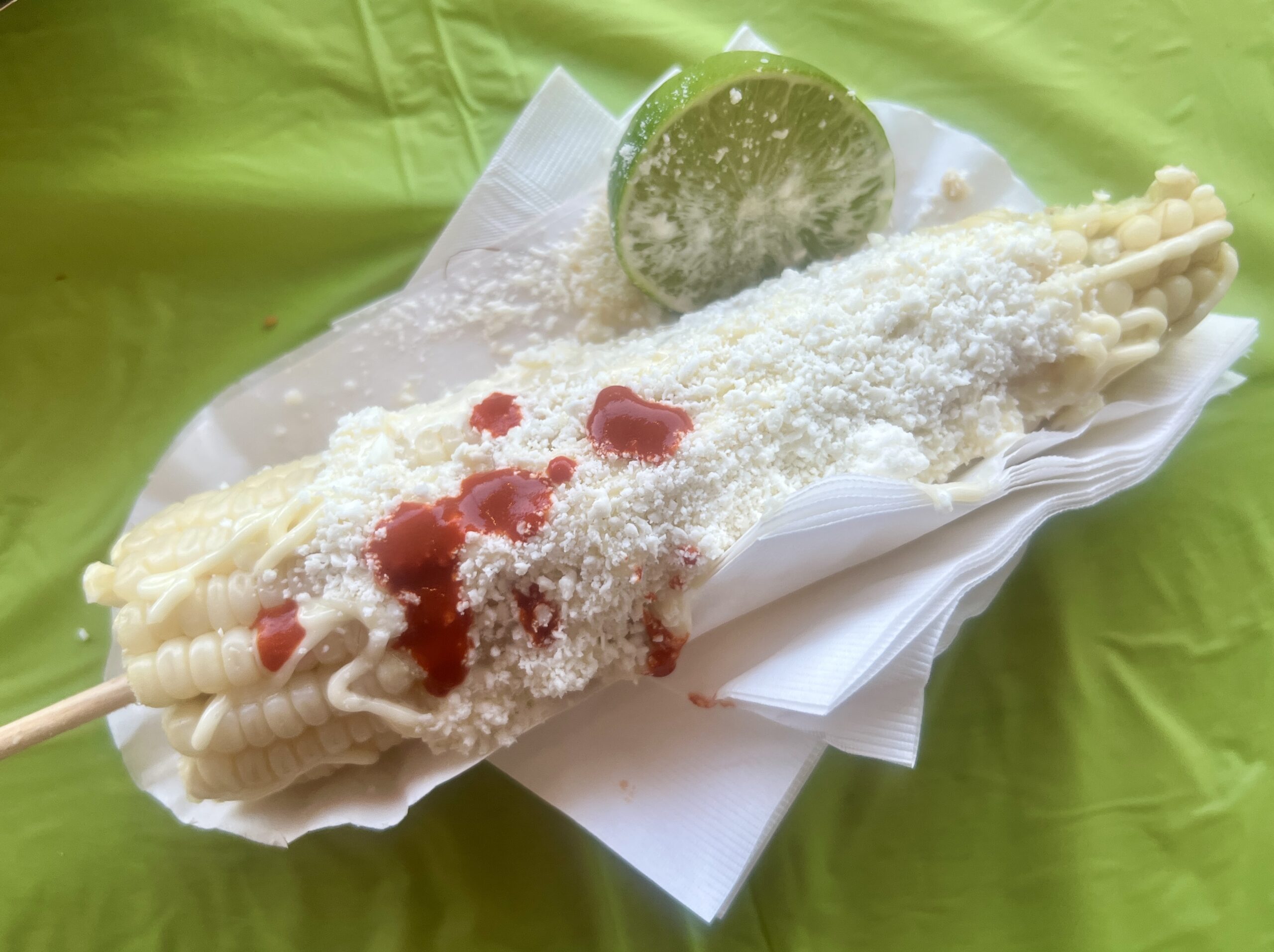
Mission Gardens in Tucson featured a demonstration of corn nixtamalization. We don’t think about it when we bite into a tortilla, tamales, or enchilada, but these dishes, and hundreds of others, are based on corn turned into nixtamal, a more workable and nutritious version of corn. Nixtamalization is a technique going back 3,500 years to the Mesoamericans. The rather complex process involves boiling and soaking dry corn with alkaline calcium hydroxide or ash (7,8).
Today, large-scale production practices give corn a bad rap. Corn is the world’s most abundant grain crop, and the USA produces more than any other nation. At least one-third of U.S. production goes to ethanol, another third goes to animal feed, and the remaining third is for human consumption and export. Criticism of industrially produced corn includes issues of monoculture farming, overuse of natural resources, pollution of air, and water, and being an inefficient way to feed people. Many argue that too much corn for human consumption goes into nutrient-poor, processed packaged products and sweeteners like high fructose corn syrup (9,10,11,12).
Pueblos del Maíz celebrates another world of corn: traditional, historical varieties and uses that must be preserved and honored with the help of organizations such as Native Seeds/SEARCH to promote biodiversity, traditional farming, and food systems.
The nutritional value of corn is often overlooked. One cup of fresh or frozen corn kernels offers 5 grams of protein and 5 grams of fiber and significant amounts of vitamin C, thiamin, folate, magnesium, and potassium (13).
Fresh corn is generally considered a vegetable, dried corn used as popcorn, made into masa, tortillas, cornmeal, flour, grits, or polenta is considered a grain. For best nutrition, look for corn products made from the whole kernel rather than refined versions.
Celebrate corn with Esquites-Style Shrimp with White Beans.
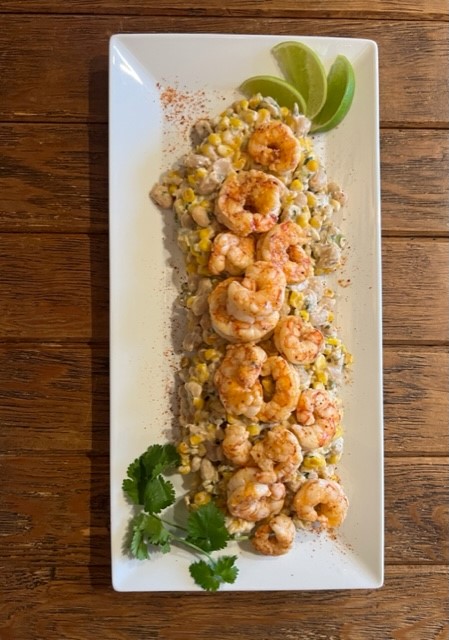
Esquites-Style Shrimp with White Beans
If you have fresh ears of corn, char them on your grill, cut off the kernels and use in the recipe.
Serves 3-4 as a meal, up to 8 as an appetizer
1/2 cup mayonnaise
1/2 cup unflavored nonfat or low-fat Greek yogurt, Mexican crema, or sour cream
3 tablespoons chopped fresh cilantro
3 tablespoons thinly sliced green onions
2-3 tablespoons lime juice, divided
2 teaspoons Tajin (chili-lime seasoning), or chili powder, more to taste
Salt, to taste
2 tablespoons olive or vegetable oil, divided
2 cups frozen sweet corn, thawed (or 4 cups fresh corn kernels from 5-6 ears fresh corn)
1/2 -1 medium jalapeno, finely chopped
1 clove garlic, finely chopped
1 can (about 16 ounces) cannellini, other white or pinto beans, drained
1/4 cup water
1 lb. medium shrimp, thawed, deveined and patted dry if frozen
To Serve:
Cilantro sprigs
Lime wedges
- Make Sauce: In a medium bowl, combine mayonnaise, yogurt, cilantro, green onion, 1 tablespoon lime juice and 1 teaspoon Tajin. Taste and add more lime, Tajin, and salt, to taste.
- Heat a large heavy skillet over medium-high heat. Swirl in 1 tablespoon oil. Add corn and cook, without stirring, about 2 minutes or until seared. Stir in jalapeno and garlic; cook for a few seconds, until fragrant. Stir in beans, 1/4 cup water and 1 tablespoon lime juice. Cook, stirring once or twice, until liquid evaporates, and beans are hot. Remove from heat. Spoon vegetables into a bowl. Stir in a generous 1/2 cup Sauce. Taste and add more Tajin and salt, if needed.
- In a bowl, toss shrimp with 1 tablespoon oil, 1 teaspoon Tajin and a pinch of salt. Return skillet to medium-high heat; spread shrimp in skillet. Cook, without turning, to sear one side. Stir and cook just until pink. Remove from heat and stir in 1 tablespoon lime juice.
- To serve, dust 4 plates or a large platter with Tajin. Spread corn and bean mixture on plates or platter. Top with shrimp. Garnish with cilantro sprigs and lime wedges. Serve with remaining Sauce.
References
- Pueblos del Maíz (pueblosdelmaiz.com)
- About | Tucson City of Gastronomy
- UNESCO Creative Cities Network. Tucson Keith Flanagan. USA Today. March 1, 2018 UNESCO Creative Cities of Gastronomy (usatoday.com)
- Culture History of Southern Arizona: Early Agriculture Period. University of Arizona, Arizona State Museum. Culture History of Southern Arizona: Early Agriculture Period | Arizona State Museum
- native seeds search arid-adapted heirloom seeds from the southwest – Native-Seeds-Search
- National Science Foundation. Scientists Trace Corn Ancestry from Ancient Grass to Modern Crop. Scientists Trace Corn Ancestry from Ancient Grass to Modern Crop | NSF – National Science Foundation
- Unlocking Nixtamal. Andrea Aliseda. June 23, 2021 https://www.epicurious.com/ingredients/what-is-nixtamal-article
- What Is Nixtamalization and How Is It Used? Mackenzie Stratton December 3, 2021. Medically reviewed by Elizabeth Ward, MS, RDN. What is Nixtamalization (thespruceeats.com)
- It’s Time to Rethink America’s Corn System – Scientific American By Jonathan Foley on March 5, 2013.
- Corn industry worldwide – statistics & facts | Statista
- Corn is America’s Largest Crop in 2019 | USDA
- Growing Corn Is A Major Contributor To Air Pollution, Study Finds : The Salt : NPR
© Lorelle Del Matto 2023
 About lorelle
About lorelle
Speak Your Mind